Quintessentially Bremen – between history and the future
Quality of lifeFrom the town hall and Roland statue to space exploration: discover all this and more in Bremen
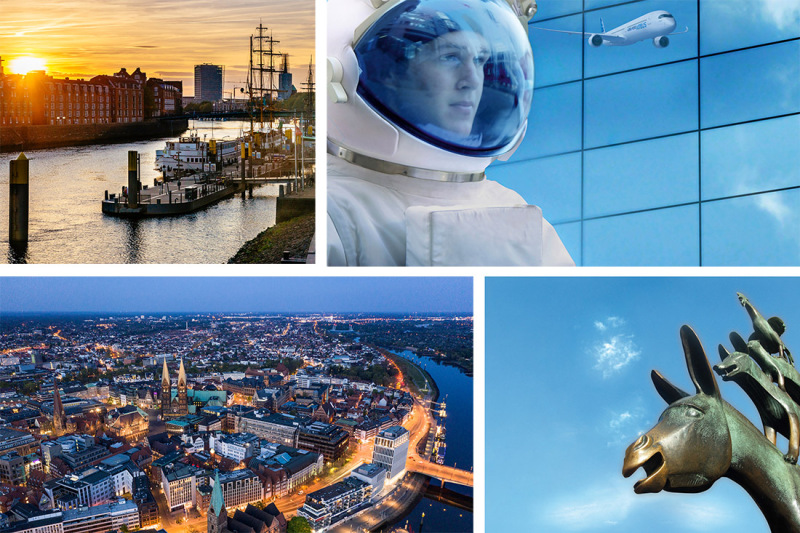
The city is famous for the Bremen Town Musicians, the market square with its UNESCO World Heritage site, the Schlachte Embankment and Werder Bremen football club. But it is also known as a hub for logistics, science and the automotive and aerospace industries, and as a bike-friendly city that is full of green spaces. To be honest, there is no reason to be modest, though that would be typical of Bremen too…
A fairytale quartet: the Bremen Town Musicians
Although they never reached their intended destination, the Bremen Town Musicians are still local heroes. In the fairytale of the Brothers Grimm, the pet quartet finds a new home in a forest on their way to Bremen by scaring away the bandits who are living there. Since then, donkey, dog, cat and rooster have become symbols for, and ambassadors of, the Hanseatic city. The most famous sculpture of them, created by sculptor Gerhard Marcks in 1951, can be found outside the western end of the town hall. There are many other representations of them in Bremen, for example the bronze figures created by artist Bernhard Hoetger by the Fountain of the Seven Lazy Brothers in the Böttcherstrasse, and several others around the world.
Historical city centre and UNESCO World Heritage site
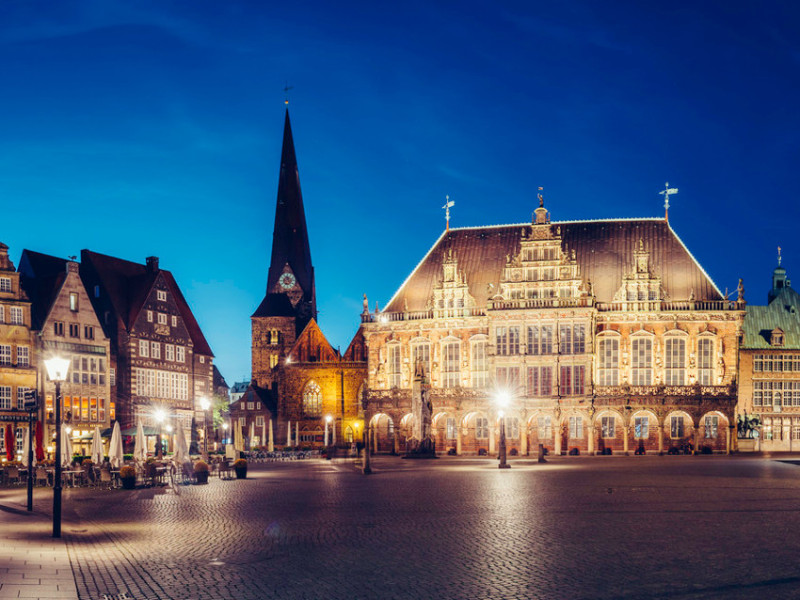
The most historical part of Bremen will make any passer-by smile, whether they are a tourist or a local. The church, the town hall, proud merchants and free citizens – history comes to life here, and all parts of society are represented in the architecture. Bremen town hall, built between 1405 and 1409 in the style of the Weser Renaissance, is part of an exceptional ensemble of buildings around the market square that includes the Schütting (guildhall), the State Parliament and the cathedral. The town hall's magnificent exterior houses the art nouveau Golden Chamber, a marble lobby and the old-established Ratskeller. The Upper Hall of the town hall, featuring model ships hanging from the ceiling, is used for ceremonial occasions, such as the Schaffermahl banquet. The town hall, together with the Roland statue that stands in front of it, was added to the list of UNESCO World Heritage sites in 2004.
Maritime charm along the Weser river and the Schlachte Embankment
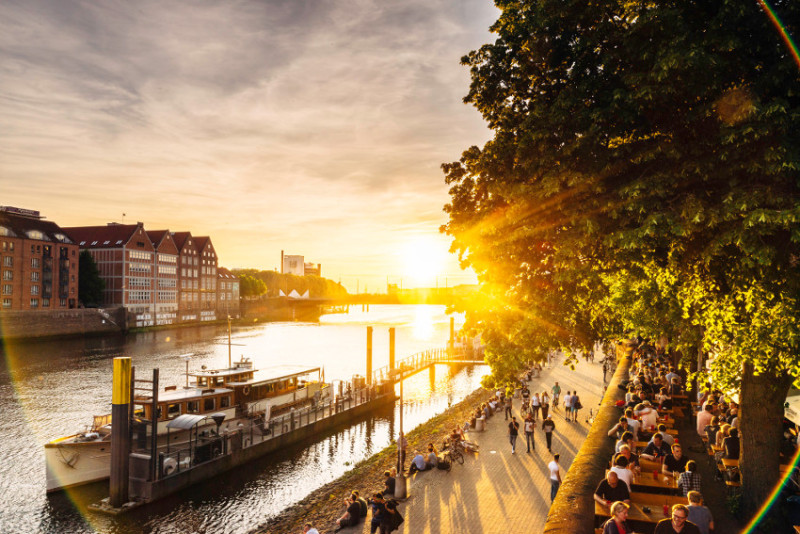
Whenever the sun shines, the focus of city life moves to the restaurants and cafés along the Schlachte Embankment. This historical embankment on the Weser river oozes maritime charm throughout the year, and it has been a vital part of Bremen life and its economy for over a thousand years. Barges, pleasure boats, small yachts, motor and rowing boats, and lovingly restored sailing vessels all make their way along this picturesque stretch. Downriver towards the railway bridge, the river becomes a route for maritime shipping, and the proximity to the sea is visible every day as the tides influence water levels in the city. When there is flooding, the floodplains upriver along Osterdeich are partially submerged. A stroll along the road of the same name brings you to magnificent mercantile villas and affords excellent views of the Weser Stadium in its idyllic setting. There is a small ferry here that will take you to the other side. A short walk away is Werdersee lake, which is perfect for swimming and water sports.

A hub for the international aerospace industry
The federal state of Bremen is one of the world's top employers in the aerospace sector. Local businesses generate an impressive €4 billion in revenue, and some of the world's leading aerospace companies like Airbus or the ArianeGroup are based or located here. There are training opportunities for young people and courses in aerospace engineering at the local university.
Home of the automotive sector
Bremen's history as a hub for the automotive industry dates back more than 110 years. The federal state has established itself as a centre of industry innovation and know-how that covers manufacturers, suppliers and service providers. Famous names such as Mercedes-Benz stand for internationally renowned expertise, and there is an extensive supplier network for raw materials, logistics, electronics and much more besides. At the world's second largest Mercedes factory, up to 400,000 new vehicles are manufactured every year and then shipped around the globe. 10 different models come from the Bremen factory.
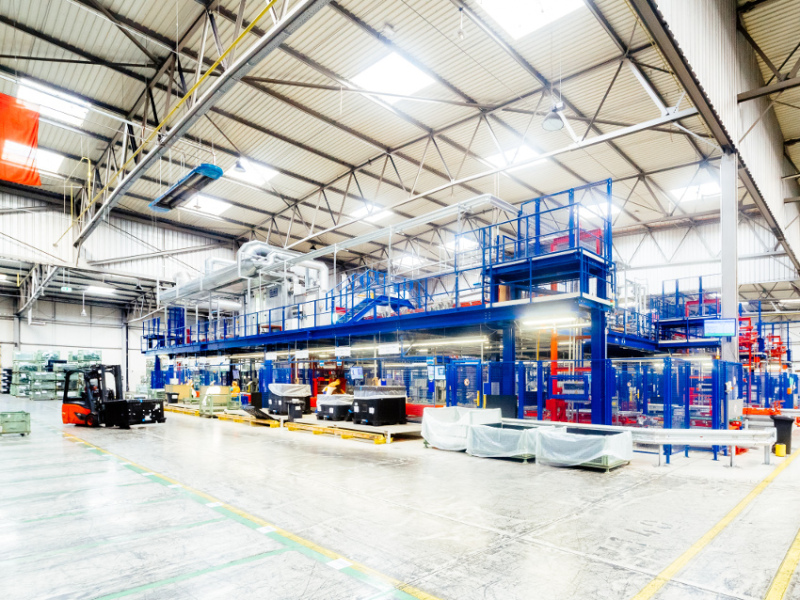
Logistics experts at the gateway to the world
The federal state of Bremen's proximity to the river and the sea make it a real gateway to the world. Consequently, the maritime economy has always played an important role and is still one of the key sectors in the region. The facts speak for themselves – Bremen is home to Europe's largest warehouses, and its cargo distribution centre is one of the largest in Germany and in Europe.
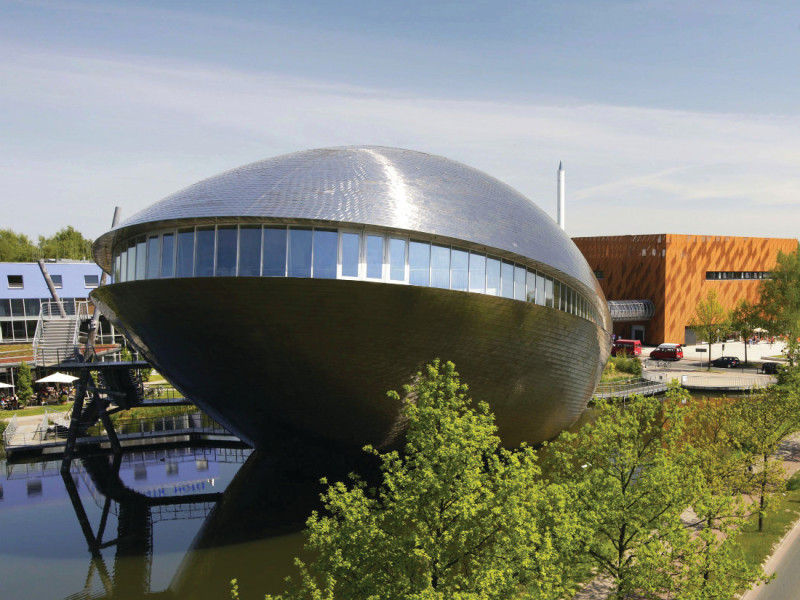
Expertise in science and innovation
The Universum Science Center in Bremen and the Klimahaus in Bremerhaven are the architectural embodiment of the state's importance as a hub for science and innovation. The technology park around the university is home to several leading research organisations, such as the Max Planck Institute and the Fraunhofer Institute. Bremen's connection to the sea is set to continue, with people across the federal state working on a future that embraces the region's maritime heritage. And the next generation of innovators is also thriving here. Compared to the national average, Bremen had the highest number of entries in the 'Jugend forscht' youth science competition in 2017.
Bike-friendly Bremen
With all this productivity and innovation, what better way to let off steam than by getting around by bicycle. The city's many parks, tree-lined streets and short distances between key destinations make cycling the preferred method of transport. According to a recent survey of 15 major German cities by the German Automobile Association (ADAC), cyclists voted Bremen first in terms of satisfaction. On a European level, Bremen is one of the most bike-friendly cities with more than half a million inhabitants. The many signs for cycle paths make it easy to find your way around, and the city's urban structure, which has evolved over time, provides a bike-friendly and green network. What's more, the Weser Cycle Route also runs through the centre, and the German Cyclists' Federation (ADFC) organises hundreds of cycle tours in and around Bremen every year.
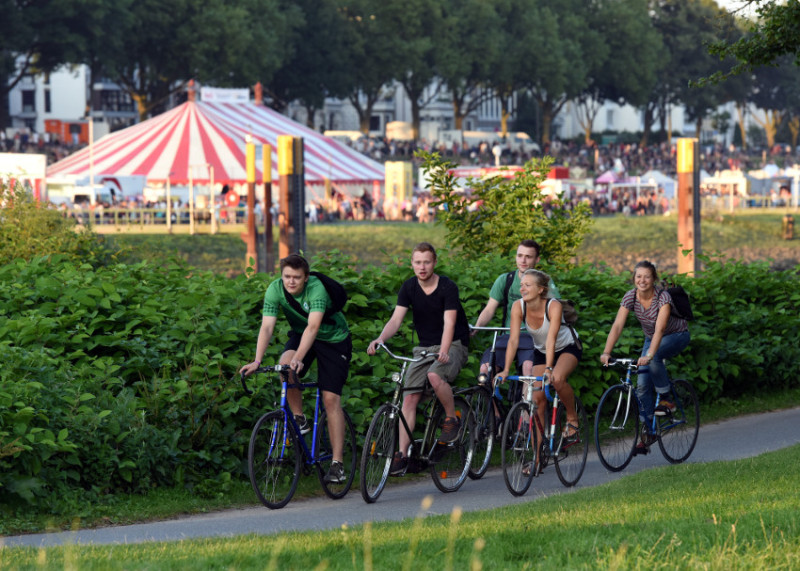
Germany's greenest city
Bremen's inhabitants sometimes jokingly refer to the city as a "village with a tram". One of the reasons behind this is surely the many parks and recreational areas in the city, such as the picturesque Wallanlagen around the centre and the nearby Schlachte Embankment and Osterdeich on the banks of the Weser river. One of the most popular destinations is the Bürgerpark, a largely privately financed green haven built in 1866 that covers more than 200 hectares. Other popular spots include Rhododendron Park in the district of Horn and the area around Werdersee lake. All this and more makes Bremen the greenest city in Germany.
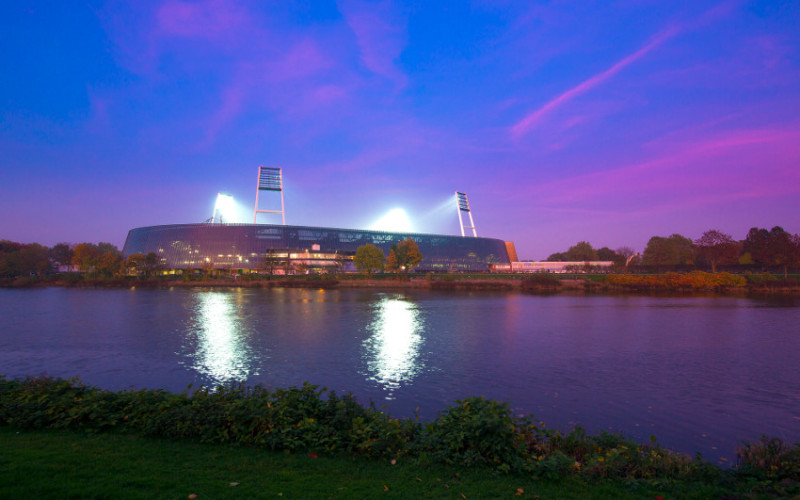
'Green and white forever' – the home of Werder Bremen
It's not just the parks that are green, the local football team, Werder Bremen, is too. Admittedly, things do not always go to plan at the Weser Stadium, even if it has one of the most idyllic settings of any sporting arena. But the fans' loyalty to their team in green and white does not depend on their position in the table. So far, the team has won the championship four times (in 1965, 1988, 1994 and 2004) and the German Cup six times. Werder Bremen is ranked third in the all-time Bundesliga table behind Bayern Munich. And next time the team wins a championship - or at least when it moves back up to the first league - there will be no better place for fans to celebrate than on Bremen´s market place.
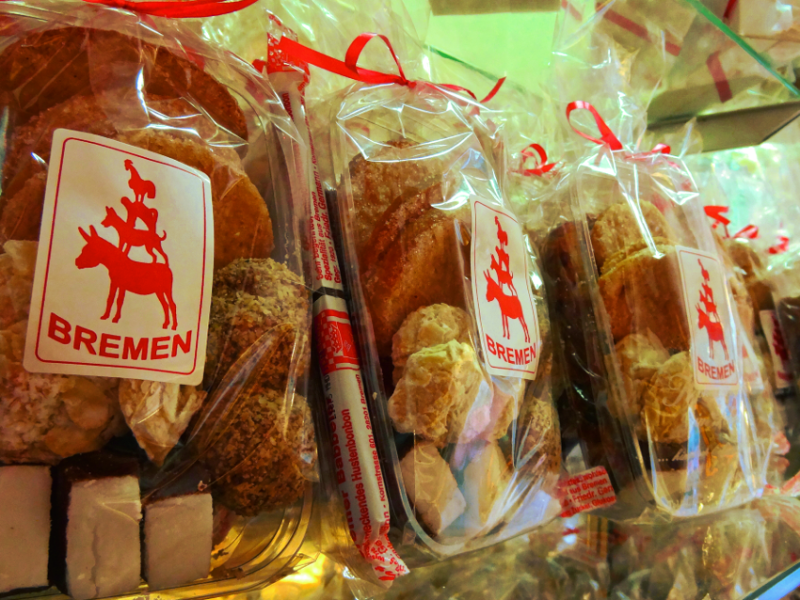
Culinary specialities from Germany's coffee capital
Bremen is without a doubt a hotspot for foodies. Many of the local culinary specialities are either very sweet or very hearty – kale and pinkel sausage, for example, is a well-known and highly popular dish. There is even a local custom called the 'kale tour', where you enjoy a supper of kale and sausage at the end of a schnapps-fuelled walk. Other traditional dishes include knipp (oatmeal with meat) and labskaus (a mix of mashed potatoes and salted meat). Naturally, fish is always in season. In spring, smelt is often served with bratkartoffeln (roast potatoes) and a fried egg.
The sweet-toothed can enjoy klaben (not to be confused with stollen cake), kluten or schnoorkuller. And the babbeler, a combination of cough sweet and candy cane available in tea shops and pharmacies, can even be used to sweeten your tea.
Moreover, Bremen is Germany´s coffee capital. For decades now, Bremen´s ports have been the most important arrival points for coffee imports in Germany. More than a 100 years ago, Ludwig Roselius founded Kaffee Hag in Bremen, which became the first coffee factory in Europe as well as the first company to sell decaffeinated coffee in the world. Inspired by its success, many other coffee companies settled in Bremen. To this day, a number of renowned companies like Melitta, Azul and Jacobs Douwe Egberts, as well as many small roasteries such as Lloyd Caffee and Union Rösterei are present in Bremen.
Success Stories
Seven products from Bremen that everybody knows
Made in Bremen, sold around the world: these products are hugely popular at home and abroad.
Learn moreBremen – Germany's greenest city
The greenest major city in Germany is Bremen - with an average of 60 square metres of sports, leisure and recreation space per person. Parks, sports facilities, but also water areas invite you to relax from the hustle and bustle of the city every day.
Learn moreOur 10 Most Favourite Places Last Year
Bremen has a lot to offer, whether it's sunny or rainy. Of course, you have to capture this in the form of stunning photos. Here are our very personal highlights from the past year.
Learn more
